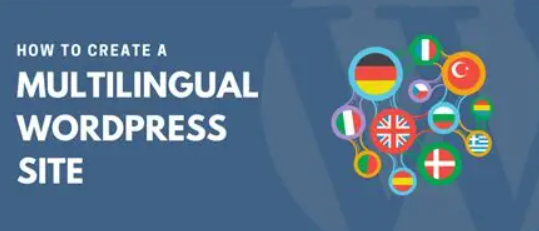A multilingual site is no longer a luxury in the modern digital world, where everyone can be found on the global scene. By building a blog, a company site, or a web store, you will benefit all the more by having a large, international audience. To achieve that, your content must be compatible with various languages. Thank god that WordPress makes it simpler than before to create and run a multilingual site.
This post will tell you all you need about developing a multilingual site through WordPress, including the choice of the relevant plugins and optimizing one on search engines. In case you are interested in future proofing your site and reaching the international audiences, this guide is meant to help you.
What is the Point in Becoming Multilingual?
Now, it is time to get to know about the advantages of multilingual WordPress site before proceeding to technical part:
-Build a new audience: Access the non-English speaking audience and open new markets.
-Enhance Search Engine Optimization (SEO): The use of multilingual SEO has the possibility of enhancing organic search visibility dramatically.
-Improve user experience: Individuals like consuming material in their mother language.
-Increase conversions and confidence: A site can be translated to desired languages so that the visitor will be more confident to convert.
Multilingual Capabilities and WordPress
WordPress uses a monolingual technique by default. But due to its flexible nature and a vibrant plugin community, it is easy to extend it to include multilingual features. Two principal ways exist:
1.With multilingual plug ins
2. Development of different WordPress installs (multisite)
We should concentrate on a more popular and scalable method, i.e., the usage of multilingual plugins.
The First-Rate Multilingual WordPress Plugins
1. The MEWP (WordPress Multilingual Plugin)
-The wordpress multi-lingual solution that is one of the most popular.
-Provision of manual and professional translation.
-Assists multilingual SEO.
-During complex and big-sized websites.
2. Polylang
-A multilingual plugin is light and strong.
-Allows you to do translations of posts, pages, media, categories and tags.
-Free addon with paid add-ons.
-Compatible with most common SEO plugins (Yoast, Rank Math and others).
3. TranslatePress
-Visual interface of translation into the front end.
-Enables manual and auto (Google Translate or DeepL) translations.
-Search engine friendly and user friendly.
-A plus to site owners that like visual tools.
Step-by-Step Guide: How to Create a Multilingual WordPress Site
Step 1: Install a Multilingual Plugin
Let’s take TranslatePress as an example for its simplicity. You can install it from the WordPress plugin directory:
Go to Plugins > Add New.
Search for “TranslatePress”.
Install and activate the plugin.
Step 2: Choose Your Languages
Once installed, navigate to Settings > TranslatePress:
Choose the default language of your site.
Add the languages you want to translate your content into.
Popular language pairs include:
English – Spanish
English – Chinese
English – Arabic
English – French
Step 3: Translate Your Content
With TranslatePress, you can navigate your website and use the visual editor to translate every part of the page. This includes:
Post and page content
Menus and widgets
Plugin strings
Meta descriptions and SEO titles (with SEO pack enabled)
Step 4: Configure Multilingual SEO
Search engines like Google support multilingual websites, but you need to help them understand your content by:
Using hreflang tags
Translating SEO titles and descriptions
Creating unique URLs for each language (e.g., /en/, /fr/, /de/)
Most plugins like WPML and TranslatePress handle these technical SEO aspects for you.
Additional Tips for Multilingual WordPress Sites
1. Don’t Use Google Translate Alone
While auto-translation is fast and easy, it often lacks accuracy and nuance. For professional results, use human translation or at least review auto-translated content manually.
2. Keep Language Switchers Visible
Add a language switcher in your header, navigation menu, or footer. This improves accessibility and user control.
3. Translate Media Files
If your images contain text or infographics, consider translating these or using captions/alt text in each language.
4. Integrate Multilingual Forms
Plugins like WPForms and Gravity Forms allow you to create forms in different languages. Combine them with multilingual plugins to ensure a seamless experience.
Common Pitfalls to Avoid
Not optimizing for multilingual SEO: Duplicate content or missing hreflang tags can hurt your rankings.
Inconsistent translations: Use glossaries and style guides to keep translations consistent.
Poor UI/UX for language switching: Make sure users can easily find and use the language selector.
Not translating plugins/themes: Use tools like Loco Translate to handle plugin and theme strings.
Hosting Considerations for Multilingual WordPress Sites
Performance matters, especially when dealing with multiple languages and content types. Here are hosting tips:
-Choose WordPress-optimized hosting like Kinsta, WP Engine, or SiteGround.
-Use a Content Delivery Network (CDN) to deliver content faster to users across regions.
-Optimize your WordPress site with caching and image compression.
Final Thoughts
Creating a multilingual site in WordPress doesn’t have to be complicated. With the right plugin, strategy, and translation workflow, you can offer a seamless experience to visitors from around the globe. Not only will this boost your brand’s credibility, but it can also increase traffic, engagement, and conversions.
As the internet becomes more inclusive and international, building a multilingual WordPress website is no longer optional—it’s essential.

